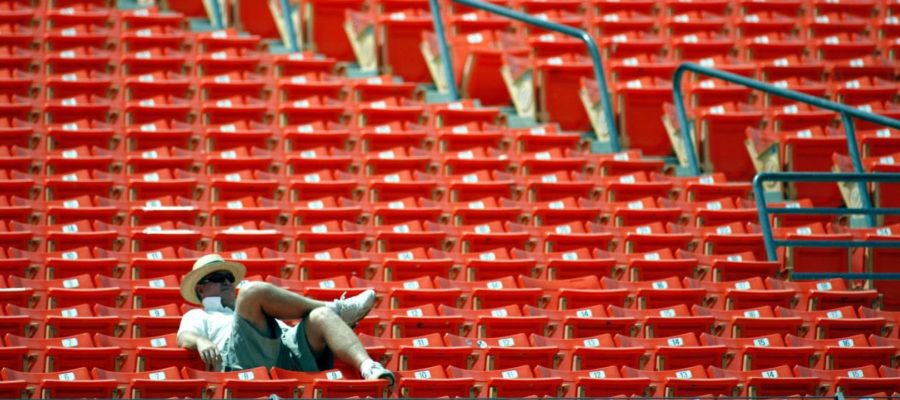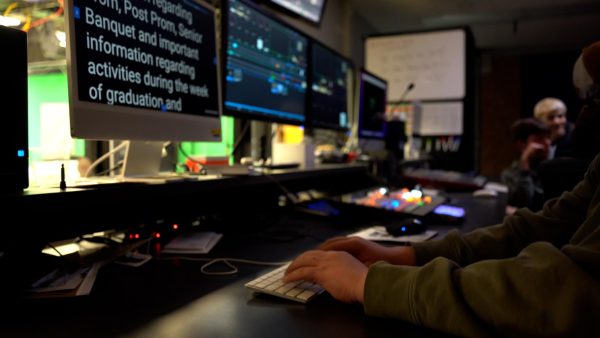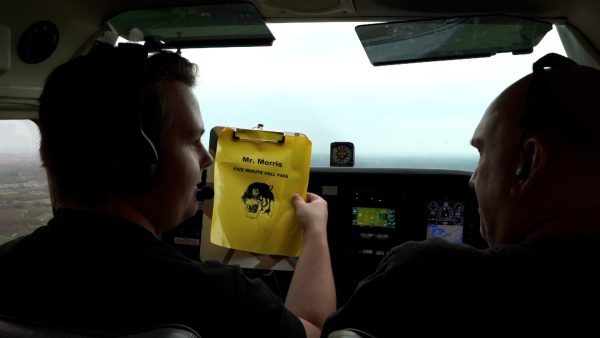The MLB’s Final Inning
Major League Baseball could soon face some significant problems, as viewership continues to plummet.
image courtesy of REUTERS/Mark Serota
Empty seats are becoming all too common during MLB games.
May 14, 2021
Baseball, being the oldest of the four major American sports, has always been known as “America’s Game.” However, the sport may no longer be deserving of the title, as increases in game length coupled with decreases in viewership and attendance could spell trouble for the future of the sport.
Many baseball experts and fans alike agree that baseball’s biggest problem is not as much the game itself as it is how long the games have become. The average MLB game time first rose above three hours long in the mid-2010s and has continuously risen, reaching three hours and five minutes in 2019. In 1980, game times averaged just over two and a half hours—a vastly different number than what we are seeing now.
Much of the blame for this added game time falls on the mind-numbing amount of time pitchers take between pitches. In 2017, the average time between pitches came out to a grueling 23.8 seconds, with the slowest pitchers averaging upwards of 30 seconds. To combat this ever-increasing downtime, the MLB has implemented a pitch clock in the minor leagues. After each pitch is thrown, two clocks, one behind home plate and one in the outfield, reset to 20 seconds. Should the pitcher fail to throw a pitch before this 20-second clock expires, the pitch is automatically categorized as a ball.
This new addition has been quite effective thus far. Four Double-A divisions—the Eastern, Southern, Pacific, International Leagues—all saw their game lengths decrease in 2015, the first year the pitch clock was added. While the Minor Leagues have seen promising results, the MLB has yet to incorporate the pitch clock in the big leagues.
Because of the ever-increasing game lengths, the MLB has seen a constant decrease in game attendance. After total attendance reached 79 million in 2008, it fell by over 5 million to 73.6 in 2009. Numbers stayed around 74 million until 2017 but fell below 70 million the next year for the first time since 2003. While attendance seems to be headed slowly in the wrong direction, TV viewership has seen a much more drastic decline.
World Series viewership fell below 20 million for the first time ever in 2000. Viewership has only topped 20 million 4 times since and has even fallen below 15 million seven times, with the worst year being 2012 at 12.6 million.
Even worse, baseball isn’t just losing fans. The remaining fans are getting older. The average age of MLB viewers in 2016 was 57, a five-year increase from ten years prior in 2006. While the three other main U.S. sports also saw an increase in average age, their averages are significantly lower at 42 for the NBA, 49 for the NHL, and 50 for the NFL. With many of the MLB’s viewers in the final stages of their lives, the MLB desperately needs to create a new generation of fans to make up for the large older generation who are on their way out.
The MLB’s decline in attendance and viewership and constantly climbing game times could spell disaster for the future of the sport. Many have argued that football has already taken the title of “America’s Game,” and the rest of the sport’s identity could be in jeopardy if the MLB continues on its downward trajectory.













